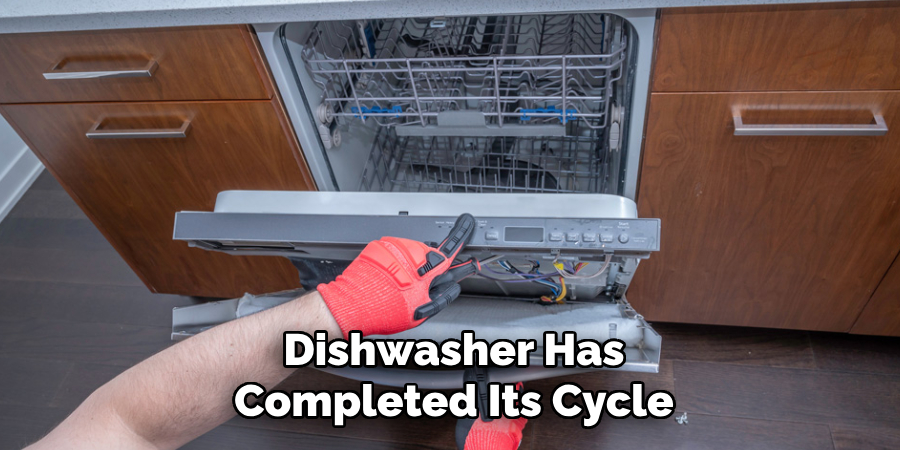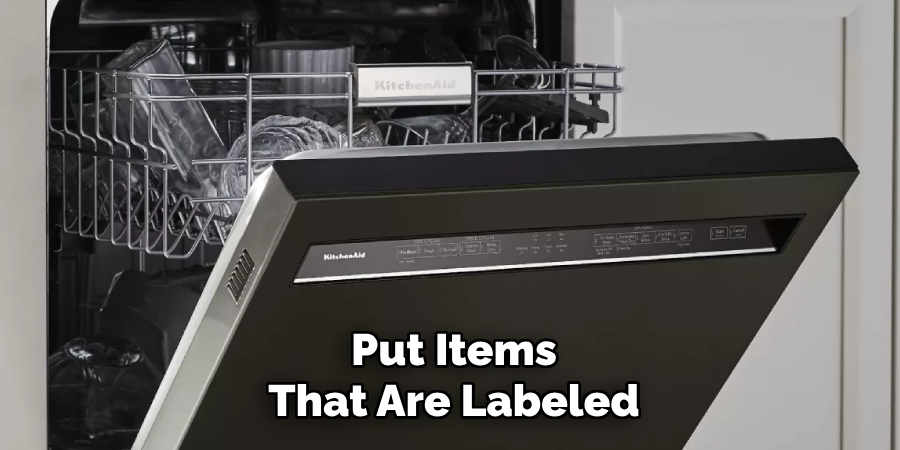Operating a KitchenAid dishwasher is straightforward and efficient, offering a seamless way to clean your dishes with minimal effort. Designed with user convenience in mind, these dishwashers come with advanced features and customizable settings to suit various cleaning needs.

This guide on how to operate kitchenaid dishwasher will walk you through the essential steps to operate your KitchenAid dishwasher effectively, ensuring optimal performance and care for your appliance.
Why Choose KitchenAid Dishwashers?
Before we dive into the steps of operating a KitchenAid dishwasher, let’s first understand why these dishwashers are a popular choice among homeowners. Here are some reasons why you should consider choosing a KitchenAid dishwasher for your kitchen:
Superior Cleaning Performance:
With advanced features like ProWash™, Clean Water Wash System, and powerful spray jets, KitchenAid dishwashers provide exceptional cleaning results. They are designed to eliminate even the toughest stains and food residues, leaving your dishes sparkling clean.
Energy and Water Efficiency:
KitchenAid dishwashers are ENERGY STAR® certified, which means they have been independently tested and proven to meet strict energy efficiency guidelines set by the U.S. Environmental Protection Agency. Additionally, these dishwashers use less water than handwashing, making them an eco-friendly choice for your kitchen.
Quiet Operation:
No one wants a loud dishwasher disrupting their daily routine. KitchenAid dishwashers come equipped with features like Whisper Quiet® System and sound insulation technology, ensuring a quiet operation that won’t disturb you or your family.
8 Step-by-step Guides on How to Operate Kitchenaid Dishwasher
Step 1: Load the Dishes
Start by loading your dishes properly into the dishwasher to ensure an effective cleaning cycle. Place larger items such as pots, pans, and plates on the bottom rack, ensuring they don’t block the spray arms. Smaller items like cups, glasses, and bowls should be arranged securely on the top rack. Utensils, including forks, knives, and spoons, should be placed in the designated utensil holder with the handles facing down for improved cleaning.

Avoid overcrowding, as this can limit water flow and reduce cleaning efficiency. Always check the owner’s manual for specific loading instructions tailored to your KitchenAid dishwasher model.
Step 2: Add Detergent
Once the dishes are loaded, the next step is to add the appropriate amount of dishwasher detergent. Open the detergent dispenser, usually located on the inside of the dishwasher door, and fill it with a high-quality automatic dishwasher detergent. Refer to the markings in the dispenser to ensure you add the correct amount, as using too much detergent can leave residue, while too little may not clean effectively.
If your KitchenAid dishwasher model includes a rinse aid dispenser, consider filling it as well to help prevent water spots and improve drying performance. Close the detergent dispenser lid securely before proceeding to the next step. Always use detergents recommended in the owner’s manual to maintain the efficiency and longevity of the appliance.
Step 3: Select the Wash Cycle
KitchenAid dishwashers come with various wash cycle options, each designed for different types of dishes and cleaning needs. Some common cycles include Heavy Duty, Normal, Quick Wash, Rinse Only, and ProWash™. Depending on your dishwasher model,

you can select the desired cycle using either knobs or buttons on the control panel. Refer to the owner’s manual for more information on available cycles and their recommended uses.
The ProWash™ cycle is a popular choice among KitchenAid dishwasher users as it uses sensors to determine the soil level and adjust the wash settings accordingly for a thorough clean.
Step 4: Choose Additional Options
Most KitchenAid dishwashers also allow you to choose additional options, such as heated dry, sanitize, or delay start. These options can be selected using buttons or switches on the control panel.
Heated dry helps with drying performance, while sanitizing heats water to high temperatures for an extra hygienic wash. Delay start allows you to set a specific time for your dishwasher to start the cleaning cycle. Refer to the owner’s manual for more information on available options and their recommended uses.
Step 5: Start the Dishwasher
Once you have selected the desired wash cycle and any additional options, it’s time to start your KitchenAid dishwasher. Simply close the door and press or turn the button/switch to start the cycle. Some models may also require you to press a “Start” button after choosing all your settings.
It’s essential to keep the door closed during the entire wash cycle for optimal performance.
Step 6: Monitor the Dishwasher
While your dishwasher is running, you can monitor its progress through a small window on the front panel or by listening for changes in sound. If you notice any issues such as leaks or unusual noises, stop the cycle immediately and refer to the owner’s manual for troubleshooting steps.
You can also pause or cancel the cycle if needed by pressing the corresponding button/switch on the control panel.
Step 7: Unload the Dishes
Once the dishwasher has completed its cycle, wait a few minutes for it to cool down before unloading your dishes. This will also help with drying performance as the dishes won’t be too hot to handle. Start by unloading any items from the bottom rack and then move onto the top rack. Be careful when handling utensils, especially knives, as they may still be sharp.

The utensil holder can be removed from the dishwasher for easier unloading and placed in a separate drying rack.
Step 8: Clean the Dishwasher
To maintain your KitchenAid dishwasher’s efficiency, it’s essential to clean it regularly. This includes wiping down the exterior surfaces with a damp cloth and removing any food particles or debris from the filters and spray arms. Check the owner’s manual for specific cleaning instructions for your dishwasher model.
Regular maintenance will also help prevent any potential issues, prolonging the lifespan of your appliance. It’s recommended to clean your dishwasher at least once a month.
Following these steps on how to operate kitchenaid dishwasher will ensure that your KitchenAid dishwasher operates effectively and efficiently, providing you with clean dishes every time. Refer to the owner’s manual for any specific instructions or troubleshooting tips for your particular model. With proper use and maintenance, your dishwasher can be a valuable asset in your kitchen, making daily tasks more manageable and convenient while also being eco-friendly. So, make sure to follow these steps and enjoy a hassle-free dishwashing experience with KitchenAid. Happy Dishwashing!
Additional Tips for Optimal Performance
- Run the hot water in your sink before starting the dishwasher to ensure it starts with hot water for better cleaning.
- Regularly check and clean the spray arms, filters, and door gasket for any blockages or build-up.
- Use a dishwasher cleaner once a month to remove any mineral or detergent residue from inside the dishwasher.
- Avoid using hand-washing dish soap in your dishwasher as it can create excessive suds and damage the appliance.
- Consider using a rinse aid if you have hard water to prevent mineral deposits on dishes and improve drying performance.
- Don’t overload or stack dishes too tightly, as this can affect water flow and cleaning efficiency.
- If your dishwasher has a stainless steel interior, avoid using abrasive cleaners or scrubbers that can scratch the surface.
- If you notice any persistent issues with your dishwasher’s performance, contact KitchenAid customer service for assistance.
Frequently Asked Questions
Q1: Can I Use Regular Dish Soap in My Kitchenaid Dishwasher?
A: No, it’s not recommended to use regular dish soap in your dishwasher as it can cause excessive suds and damage the appliance. The detergents recommended in the owner’s manual are specially formulated for use in dishwashers.
Q2: How Often Should I Clean My Kitchenaid Dishwasher?
A: It’s recommended to clean your dishwasher at least once a month for optimal performance. However, if you notice any build-up or issues with cleaning efficiency, it may be necessary to clean it more frequently.
Q3: Can I Put Non-Dishwasher Safe Items in My Kitchenaid Dishwasher?
A: No, it’s essential to only put items that are labeled as dishwasher safe into your dishwasher. This includes dishes, utensils, and

cookware made from materials such as glass, ceramic, plastic, and stainless steel. Non-dishwasher-safe items can damage or damage the appliance during the wash cycle.
Q4: Why is My Kitchenaid Dishwasher Not Drying Dishes?
A: There could be various reasons for this, such as not using a rinse aid, overloading the dishwasher, or selecting a wash cycle without heating dry. Refer to the owner’s manual for troubleshooting steps and ways to improve drying performance.
Conclusion
By following the outlined steps on how to operate kitchenaid dishwasher and incorporating the additional tips, you can ensure that your KitchenAid dishwasher runs efficiently and provides sparkling clean results with every use. Proper maintenance and adherence to the manufacturer’s recommendations not only improve performance but also extend the lifespan of your appliance.
A well-cared-for dishwasher is a reliable and eco-friendly addition to any kitchen, making daily dishwashing hassle-free and convenient. With just a little effort, you can maximize the benefits of your KitchenAid dishwasher and enjoy a consistently excellent dishwashing experience.
Professional Focus
Angela Ervin, a former interior designer turned blogger, specializes in kitchen design and renovations. Through her website, she blends her passion for cooking with design expertise, sharing practical and creative ideas. Known for balancing functionality and beauty, Angela’s insightful content has made her a trusted voice in home design and lifestyle.
About the Author
Angela Ervin, an experienced interior designer and blogger, combines her passion for kitchen renovations with storytelling. Living in Petersburg with her family, she enjoys cooking and testing her projects firsthand. Known for her humor and relatable style, Angela shares creative, functional design insights through her content, making her a trusted voice in home design.
Education History
University: Virginia Commonwealth University
Degree: Bachelor of Fine Arts (BFA) in Interior Design
- Angela’s education at VCU focused on mastering core interior design principles, including spatial planning, color theory, materials selection, and sustainable design practices.
- She gained hands-on experience through studio projects and collaborative design exercises, which honed her ability to create functional and aesthetically pleasing environments.
- Her coursework also emphasized problem-solving and practical applications of design, preparing her for real-world projects like her self-directed kitchen renovations.
- The program’s strong foundation in both technical skills and creative expression shaped Angela’s ability to seamlessly integrate form and function in her work.
